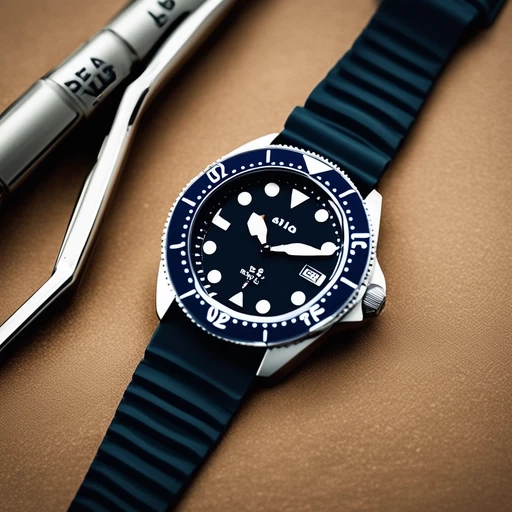Few clocks in the broad field of horology grab the imagination as diving watches do. These trustworthy and durable companions serve as both symbols of tough design and expert engineering, as well as being necessary instruments for underwater explorers. While a diving watch's primary function will always be to keep correct time in the ocean's depths, watchmakers are always working to innovate and add special features that distinguish their products. We'll explore the technology and designs that set these watches apart as we go deeply into the world of diving watches with distinctive characteristics.
1.Luminescence Beyond Compare
Visibility in poor light and under water is one of a diving watch's most crucial characteristics. The hands and markings of traditional diving watches are painted with illuminating material, but some watches go much farther. Super-LumiNova or tritium gas tubes, used in watches from companies like Seiko and Rolex, ensure outstanding visibility in even the darkest seas. An readily visible steady glow is produced by a radioactive isotope found in tritium gas tubes. This isotope continually produces light without the need for an additional charge. On the other hand, Super-LumiNova is a non-radioactive luminescent substance that charges fast under light and generates a strong glow at night.
2.Dive computers and depth gauges
Despite the fact that many dive watches have water resistance ratings and unidirectional rotating bezels for keeping track of dive time, other models go one step further by including depth gauges or even sophisticated dive computers. In addition to telling the time, these watches include vital information for divers such as the current depth, the deepest point reached during the dive, the water temperature, and the amount of time the dive will last depending on gas usage. Due to the fusion of diving and timekeeping technology, these watches are essential instruments for professional underwater explorers.
3.Release valves for helium
Helium gas accumulation can be an issue for saturation divers who operate in pressurized spaces like diving bells or submersibles. Small helium molecules have the ability to penetrate watch seals for extended periods of time underwater. Due to the pressure differential when divers resurface, the stored helium may cause the crystal to break. Some diving watches have helium release valves that prevent this by allowing extra helium to slowly escape without endangering the watch. Although most recreational divers do not need this function, it demonstrates the lengths to which watchmakers would go in order to meet the unique requirements of professionals.
4.Ceramic and Titanium Cases
Historically, stainless steel has been the preferred material for diving watch casings because of its durability and resistance to corrosion. But other timepieces are defying convention by using titanium or ceramic casings. Because it is lightweight and easy to wear for lengthy periods of time while maintaining exceptional strength, titanium is highly appreciated. On the other hand, ceramic has a distinctive, contemporary appearance and provides great scratch resistance. These different materials not only increase the toughness of diving watches but also give them a modern touch.
5.Quartz vs. Mechanical Movements
The majority of diving watches have quartz or mechanical movements. Although mechanical movements are renowned for their elaborate design and sweeping seconds hands, they need routine winding and are susceptible to temperature changes. On the other hand, battery-operated quartz movements are exceptionally accurate and need little upkeep. However, some watch aficionados contend that a diving watch's mechanical heartbeat is what gives it its soul, while others value the dependability of quartz technology. Each diving watch has its own distinct individuality, which is greatly influenced by the movement type that is chosen.
6.Integration of Smart Features
It's hardly surprising that some diving watches now incorporate cutting-edge functions like Bluetooth connectivity, fitness monitoring, and even dive log synchronization in the age of smart technology. The traditional allure of analog diving watches is combined with the practicality of digital connection in these hybrid timepieces. These watches give divers a complete toolkit for their underwater explorations thanks to their connectivity with smartphones and other gadgets.
Conclusion:
Dive watches are a testament to both practical design and aesthetically pleasing appeal in the field of horology. They have developed from basic timekeeping devices to complex underwater research equipment because of their sturdy structure and unique characteristics. Diverse case materials, luminescence, depth gauges, and smart integrations are just a few of the ways that dive watches continue to push the envelope of innovation.
The market for miniature diving watches has also established itself among these extraordinary timepieces. Small dive watches, however sometimes disregarded in favor of bigger equivalents, provide a subtle and useful option for individuals who prefer a more compact wrist presence. They demonstrate that innovation has no boundaries, even in the realm of smaller watches, by painstakingly designing their distinctive characteristics to fit a smaller form factor. We can only expect more ground-breaking features and designs in both big and tiny dive watches as horological technology develops, catering to the various interests of watch aficionados and underwater explorers alike.


